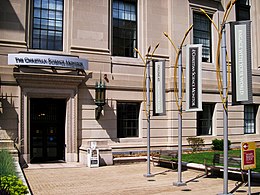
The Boston Herald is an American daily newspaper whose primary market is Boston, Massachusetts, and its surrounding area. It was founded in 1846 and is one of the oldest daily newspapers in the United States. It has been awarded eight Pulitzer Prizes in its history, including four for editorial writing and three for photography before it was converted to tabloid format in 1981. The Herald was named one of the "10 Newspapers That 'Do It Right'" in 2012 by Editor & Publisher.

The Chicago Tribune is an American daily newspaper based in Chicago, Illinois, owned by Tribune Publishing. Founded in 1847, and formerly self-styled as the "World's Greatest Newspaper", it remains the most-read daily newspaper in the Chicago metropolitan area and the Great Lakes region. In 2022, it had the seventh-highest circulation of any American newspaper.

This Pulitzer Prize has been awarded since 1942 for a distinguished example of reporting on international affairs, including United Nations correspondence. In its first six years (1942–1947), it was called the Pulitzer Prize for Telegraphic Reporting - International.
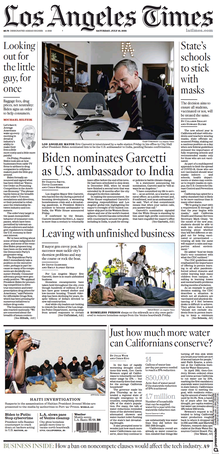
The Los Angeles Times is a regional American daily newspaper that started publishing in Los Angeles, California in 1881. Based in the Greater Los Angeles area city of El Segundo since 2018, it is the sixth-largest newspaper by circulation in the United States, as well as the largest newspaper in the western United States. Owned by Patrick Soon-Shiong and published by California Times, the paper has won more than 40 Pulitzer Prizes.

The Oregonian is a daily newspaper based in Portland, Oregon, United States, owned by Advance Publications. It is the oldest continuously published newspaper on the U.S. West Coast, founded as a weekly by Thomas J. Dryer on December 4, 1850, and published daily since 1861. It is the largest newspaper in Oregon and the second largest in the Pacific Northwest by circulation. It is one of the few newspapers with a statewide focus in the United States. The Sunday edition is published under the title The Sunday Oregonian. The regular edition was published under the title The Morning Oregonian from 1861 until 1937.
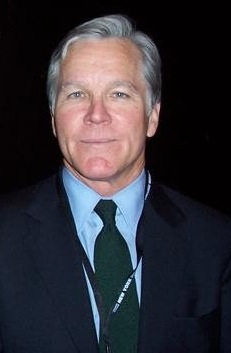
Bill Keller is an American journalist. He was the founding editor-in-chief of The Marshall Project, a nonprofit that reports on criminal justice in the United States. Previously, he was a columnist for The New York Times, and served as the paper's executive editor from July 2003 until September 2011. On June 2, 2011, he announced that he would step down from the position to become a full-time writer. Jill Abramson replaced him as executive editor.
The Concord Monitor is the daily newspaper for Concord, the state capital of New Hampshire. It also covers surrounding towns in Merrimack County, most of Belknap County, as well as portions of Grafton, Rockingham and Hillsborough counties. The Monitor has several times been named as one of the best small papers in America and in April 2008, became a Pulitzer Prize winning paper, when photographer Preston Gannaway was honored for feature photography.

The Tampa Bay Times, called the St. Petersburg Times until 2011, is an American newspaper published in St. Petersburg, Florida, United States. It is published by the Times Publishing Company, which is owned by The Poynter Institute for Media Studies, a nonprofit journalism school directly adjacent to the University of South Florida St. Petersburg campus.
The Daily Breeze is a 57,000-circulation daily newspaper published in Hermosa Beach, California, United States. It serves the South Bay cities of Los Angeles County. Its slogan is "LAX to LA Harbor".
The Berkeley Beacon is the student newspaper of Emerson College, founded in 1947. The paper is published weekly on Thursdays during the fall and spring semesters of Emerson's academic year.
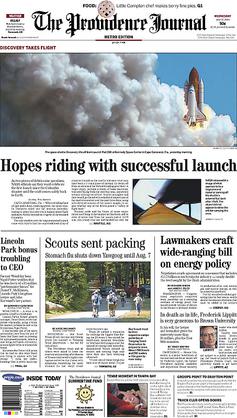
The Providence Journal, colloquially known as the ProJo, is a daily newspaper serving the metropolitan area of Providence, the largest newspaper in Rhode Island, US. The newspaper was first published in 1829. The newspaper had won four Pulitzer Prizes as of 2023.
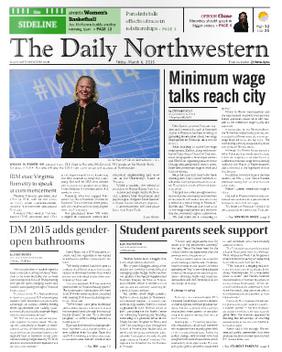
The Daily Northwestern is the student newspaper at Northwestern University which is published in print on Mondays and Thursdays and online daily during the academic year. Founded in 1881, and printed in Evanston, Illinois, it is staffed primarily by undergraduates, many of whom are students at Northwestern's Medill School of Journalism.
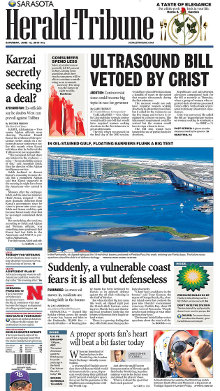
The Sarasota Herald-Tribune is a daily newspaper, located in Sarasota, Florida, founded in 1925 as the Sarasota Herald.
The Columbia Daily Spectator is the student newspaper of Columbia University. Founded in 1877, it is the second oldest continuously operating college news daily in the nation after The Harvard Crimson, and has been legally independent from the university since 1962. It is published at 120th Street and Claremont Avenue in New York City. During the academic term, it is published online Sunday through Thursday and printed twice monthly. In addition to serving as a campus newspaper, the Spectator also reports the latest news of the surrounding Morningside Heights community. The paper is delivered to over 150 locations throughout the Morningside Heights neighborhood.
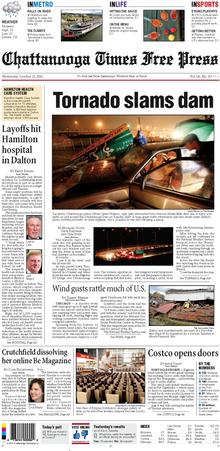
The Chattanooga Times Free Press is a daily broadsheet newspaper published in Chattanooga, Tennessee, and is distributed in the metropolitan Chattanooga region of southeastern Tennessee and northwestern Georgia. It is one of Tennessee's major newspapers and is owned by WEHCO Media, Inc., a diversified communications company with ownership in 14 daily newspapers, 11 weekly newspapers and 13 cable television companies in six states.
Richard Lee Strout was an American journalist and commentator. He was national correspondent for the Christian Science Monitor from 1923 and he wrote the "TRB from Washington" column for The New Republic from 1943 to 1983; he collected the best of his columns in TRB: Views and Perspectives on the Presidency, a book notable for showing that Strout was one of the first observers of the American presidency to express worry about what later scholars and journalists came to call the imperial presidency.

Robert John Hughes was a British-born American journalist, a Nieman Fellow at Harvard University, and winner of the Pulitzer Prize for his coverage of Indonesia and the Overseas Press Club Award for an investigation into the international narcotics traffic. He served as editor of The Christian Science Monitor and The Deseret News and is a former president of the American Society of Newspaper Editors. Hughes has written two books and for years wrote a nationally syndicated column for The Christian Science Monitor.
Richard Bergenheim, CSB, was the editor of The Christian Science Monitor and served The First Church of Christ, Scientist in numerous other capacities including on the church's Board of Directors and as President of The Mother Church.

The 2012 Pulitzer Prizes were awarded on April 16, 2012, by the Pulitzer Prize Board for work during the 2011 calendar year. The deadline for submitting entries was January 25, 2012. For the first time, all entries for journalism were required to be submitted electronically. In addition, the criteria for the Pulitzer Prize for Local Reporting has been revised to focus on real-time reporting of breaking news. For the eleventh time in Pulitzer's history, no book received the Fiction Prize.
Katherine "Kay" Fanning was an American journalist and newspaper editor and publisher. She was editor and publisher of the Anchorage Daily News. In 1983, she became editor of the Christian Science Monitor in Boston, Massachusetts, becoming the first woman to edit an American national newspaper. She was the president of the American Society of News Editors from April 1987 to April 1988.


